News about maps
Digital cartography and GPS navigation
Mapstor news
This Day in History
Travelling with mapstor.com
Digital cartography and GPS navigation
115 years of flight
Next-generation of GPS satellites are headed to space
DJI Phantom 4 RTK - cartography of a new generation
Earthquake prediction systems
OneSoil map
Winged Juno go blind at Jupiter
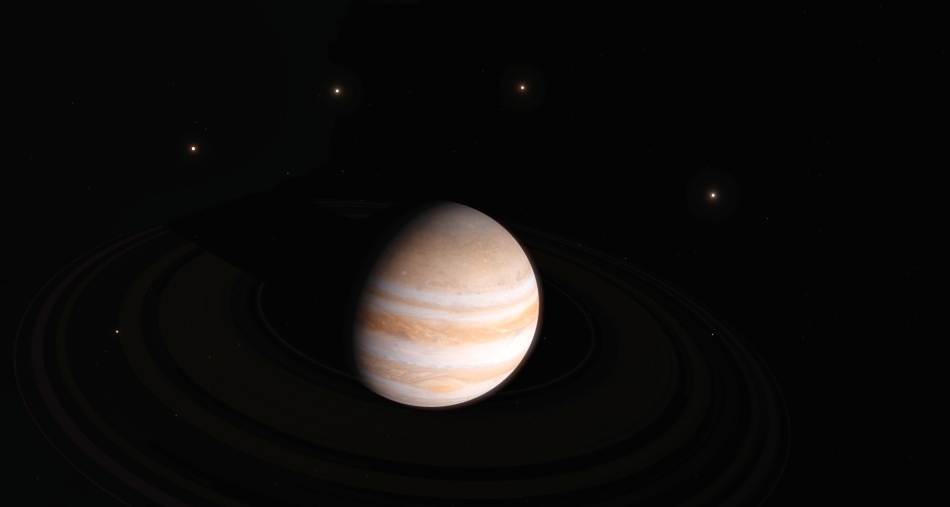
Old secrets
According to modern cosmological ideas from all the planets in the solar system, Jupiter was the first to form.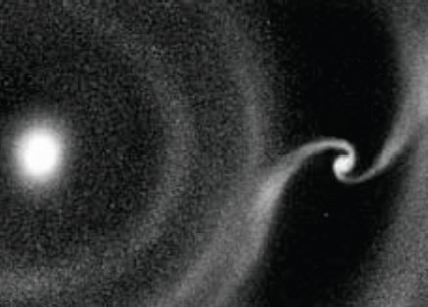
It could look like this
Protoplanetary disk and the Sun should have a similar composition, because they were formed from a substance in one place. Therefore, Jupiter would be very much like the sun. However, after the probe "Galileo" went into the atmosphere of the gas giant in 1995 it was found that scientists calculations were wrong. Helium on Jupiter was much smaller than on the Sun, and less than it should be according to the calculations. Water vapor, carbon, neon, and sulfur also present in less quanity than expected. But the nitrogen in ammonia form was discovered more than estimated. Therefore, our model of the formation of Jupiter and a model of the solar system was in some aspects wrong.
After formation the planet made a rather big journey, moving in its orbit, and "eating" a lot of that could go for something useful for the future of humanity (like a large and heavy Mars with a full atmosphere).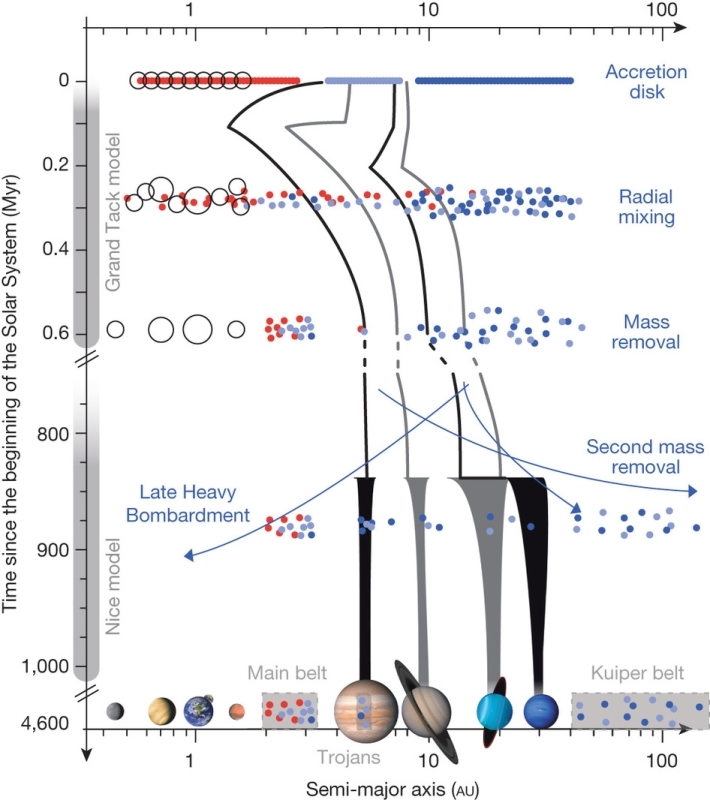
But absorbed mass could not form the core of the planet - the substance falls into the dense atmosphere at space velocities and was vaporized by heating. If Jupiter has the kernel (and modern science is inclined to think so), then in young solar system should had formed a very large planetary embryos from heavy elements, what is contrary to modern models.
Finally, most likely, under the influence of Saturn, two planets moved in the outer solar system, and now Jupiter has drawn to a distance of five astronomical units from the sun. As a result of the mysterious processes in the young solar system, Jupiter has the greatest possible physical diameter (the heavier planet would have a smaller diameter due to the greater compression of the matter), weighing in three hundred more than the earth, its mini solar system of multiple satellites and even small rings. Jupiter can be called a "planet on steroids" - because of the huge mass within the planet function cyclopean scale forces, and all the phenomena associated with it, are suffering from gigantism. Jupiter has colossal size and power of the magnetosphere (stronger than the Earth in 14 times), generating huge auroras.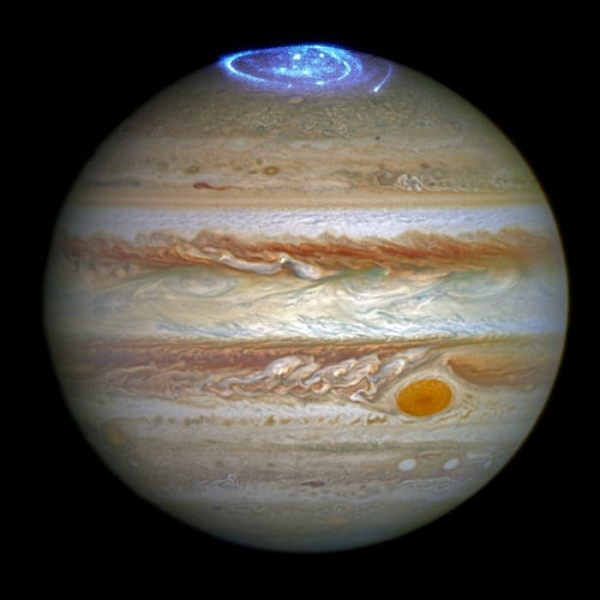
In these mysteries of the gas giant will go probe "Juno", which should go into orbit around Jupiter on July 4 US tim. Tasks that will be solved by the "Juno", are -origin, structure, atmosphere, magnetosphere.
Scientific carousel
These tasks will be explored by a diverse set of tools:
The microwave radiometer (MWR) will glance at the 550 kilometers under the edge of the cloud and will be able to determine the content of water vapor in the atmosphere. Structurally, it ‘‘has six antennas on the sides of the device: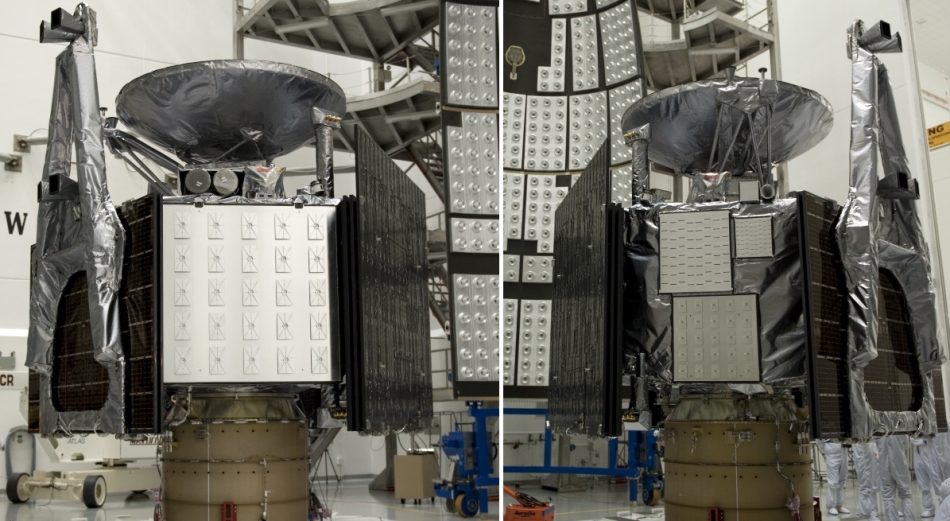
Gravity Experiment (Gravity Science Experiment) will use the antenna to communicate with Earth for very precise determination of the gravitational field. The signal from the Earth will be immediately relayed, and its frequency offset due to the Doppler effect will determine small changes in speed due to the uneven gravitational field of Jupiter.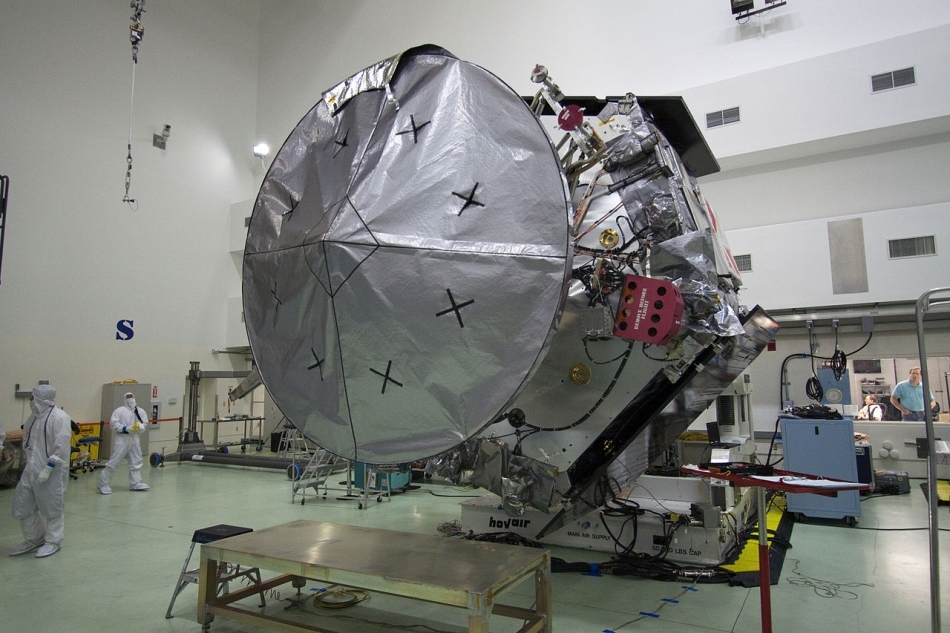
The directional antenna will be used in this experiment
Margnetometer (MAG welding), passed on to the side at the end of one of the solar panels (a standard solution, magnetometers everywhere trying to get away from a working electronic device) would create a three-dimensional map of the magnetic field of Jupiter.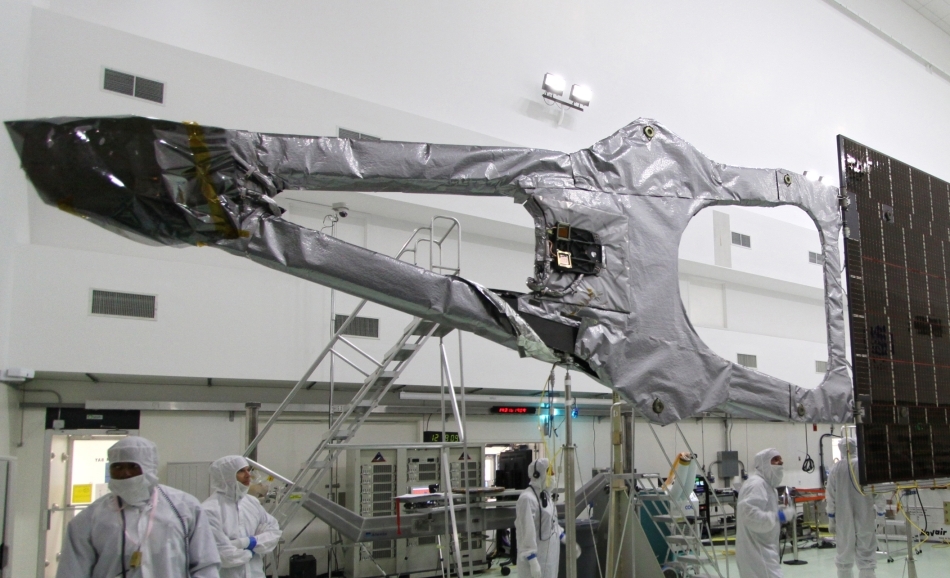
In the experiment, "the distribution of particles in the auroral» (JADE) three electronic sensors and one ion will catch aurora polaris.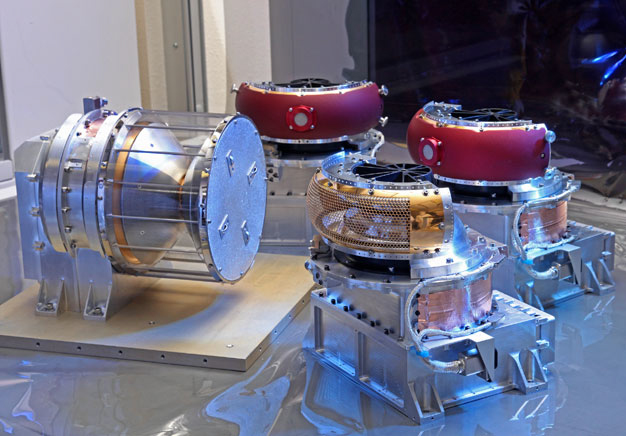
High-energy particle detector (JEDI) of three identical sensors will determine how flying in the vicinity of high-energy particles interact with the magnetosphere of Jupiter. A large number of these particles gets trapped in the magnetic field of Jupiter and light aurora at the poles.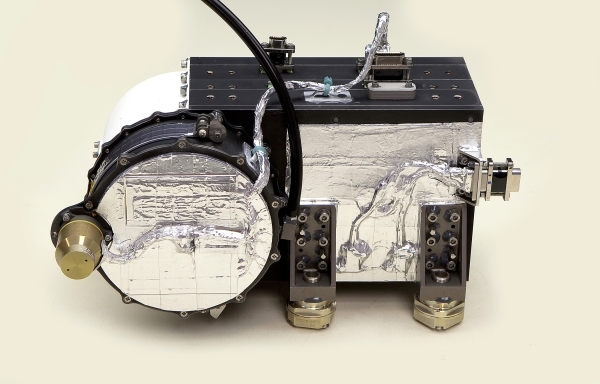
Infrared surveyor auroras (JIRAM) will allow to obtain spectra of auroras and learn composition of the atmosphere around them.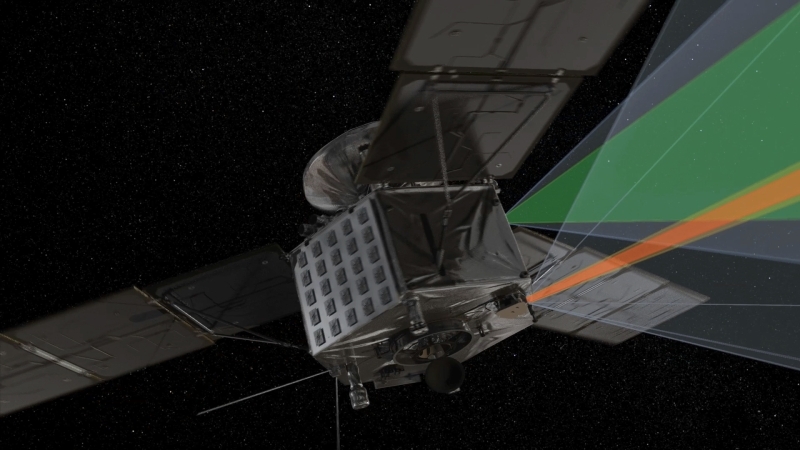
Ultraviolet Spectrograph (UVS) will make it possible to remotely identify the composition of the upper atmosphere in the other range, adding JIRAM.
Tool "Waves" of the two antennas will capture the radio and plasma waves in the vicinity of Jupiter. One antenna is structurally very different from those that once stood "horns" on TV, and the other is a conventional magnetic coil.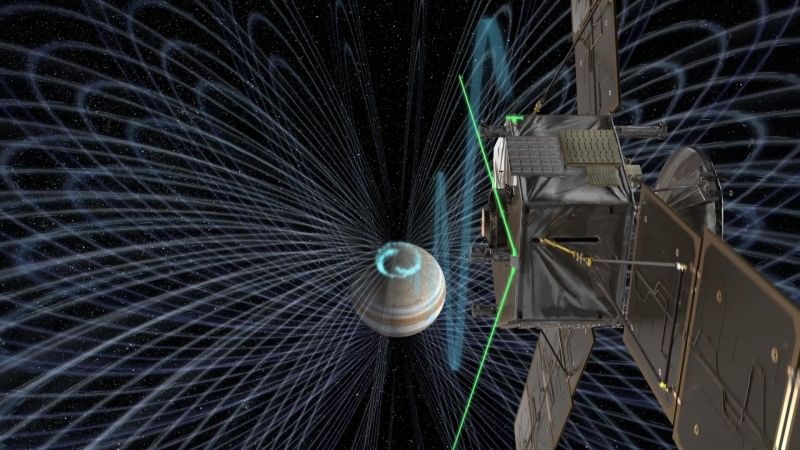
And finally, Junocam camera does not bear serious scientific load, and is added for the purposes of promotion and public relations. Working in the visible light, the camera should make beautiful pictures at least seven orbits, and then fails in the Radiation hell, where "Juno" will dive each turn.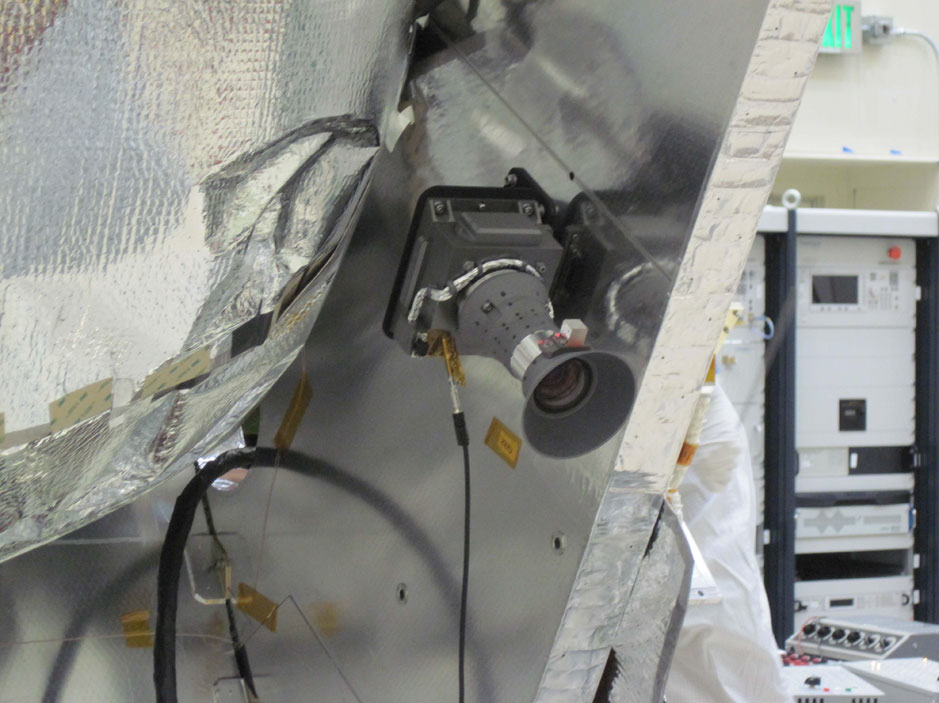
All the tools are installed on the sides of the apparatus, and in operating mode of the "Juno" will both look into depths of Jupiter, and rest or calibrate, looking in the opposite direction.
Waltz Fallout
Rotation of the "Juno" - is a conscious decision. From many methods of the spacecraft orientation and stabilization, rotation allows to maintain for “free” the desired position along one axis, spending fuel only for promotion of the device and without work of the electronics to maintain the established orientation. In the context of powerful magnetic fields and high-energy particles a full three-axis orientation may fail and set the unit to a secure mode with the loss of the scientific program of this coil and spinning top "Juno" will maintain the correct position for any failure of any electronics. On the way to Jupiter, "Juno" was rotated at 1 rev/min, the working mode of research 2/min, and to maneuver the machine will spin up to 5 rev/min.
37 jump to hell
Braking at the Jupiter on 4/5 of July will be the start of the mission. By reducing its speed to 542 meters per second, "Juno" will be released on pre-orbit period of 53.5 days. If braking will not be successful, the probe will forever miss Jupiter. Therefore, at this stage, just in case, all the scientific instruments will be turned off. After two turns on a preliminary orbit "Juno" will go to the scientific orbit for the period of 14 days.
On this highly elliptical orbit "Juno" will periodically dive into close proximity to Jupiter (to a height of 4-8 thousand kilometers from the cloud level) and move away again beyond the orbit of Callisto. Because of Jupiter's rotation, the orbit each time will go on different meridians, and the unit will be able to fly over the entire surface, which will create a three-dimensional map of the magnetosphere of all Jupiter.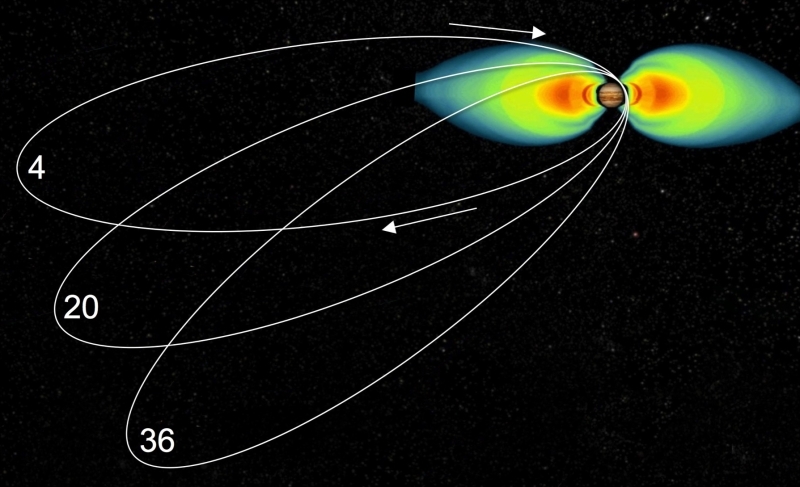
If all goes according to plan, at the turn 37 "Juno" will perform the last maneuver, and on February 20, 2018 will burn in the atmosphere of Jupiter.
Digital cartography and GPS navigation 10-07-2016


